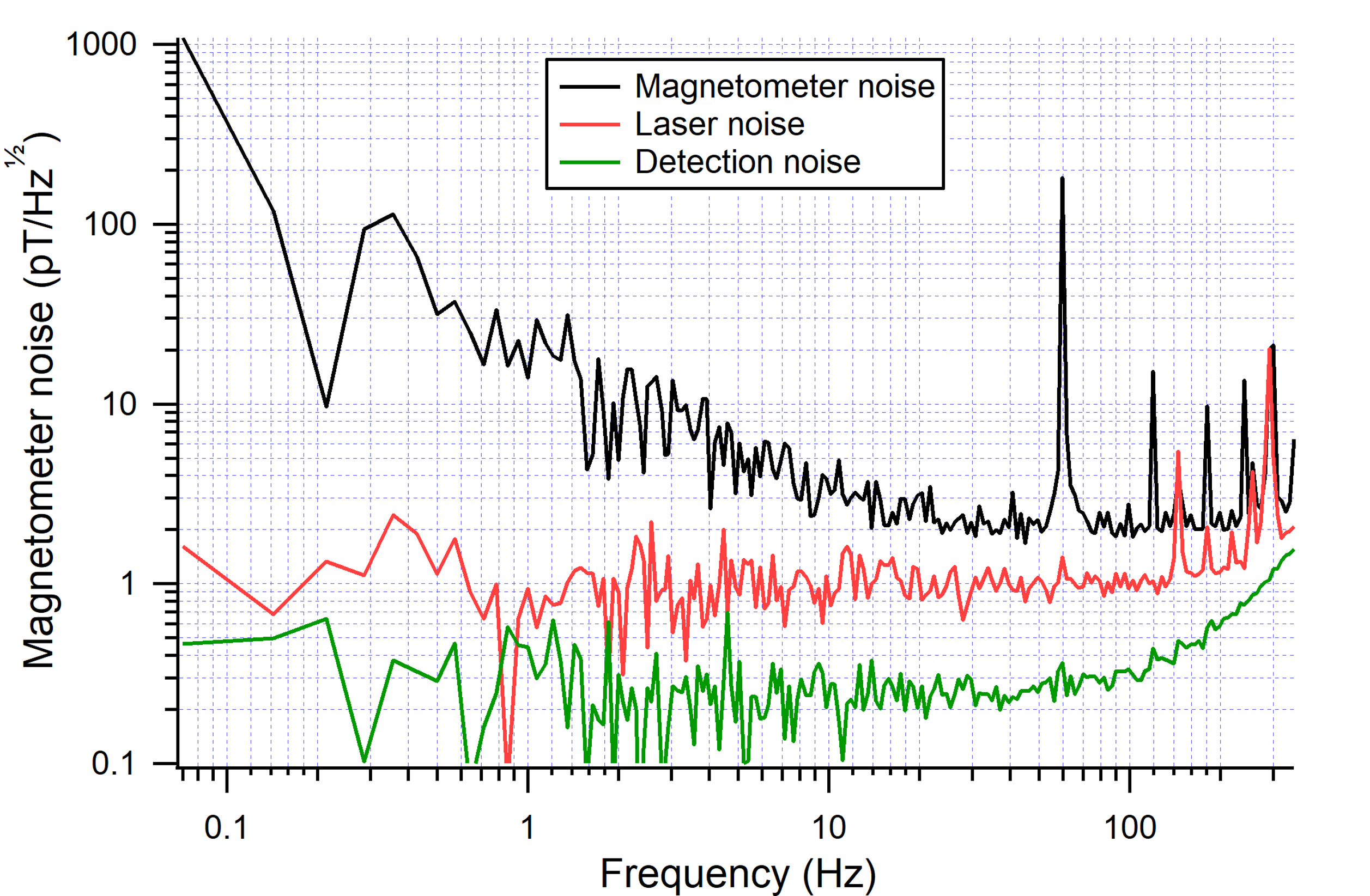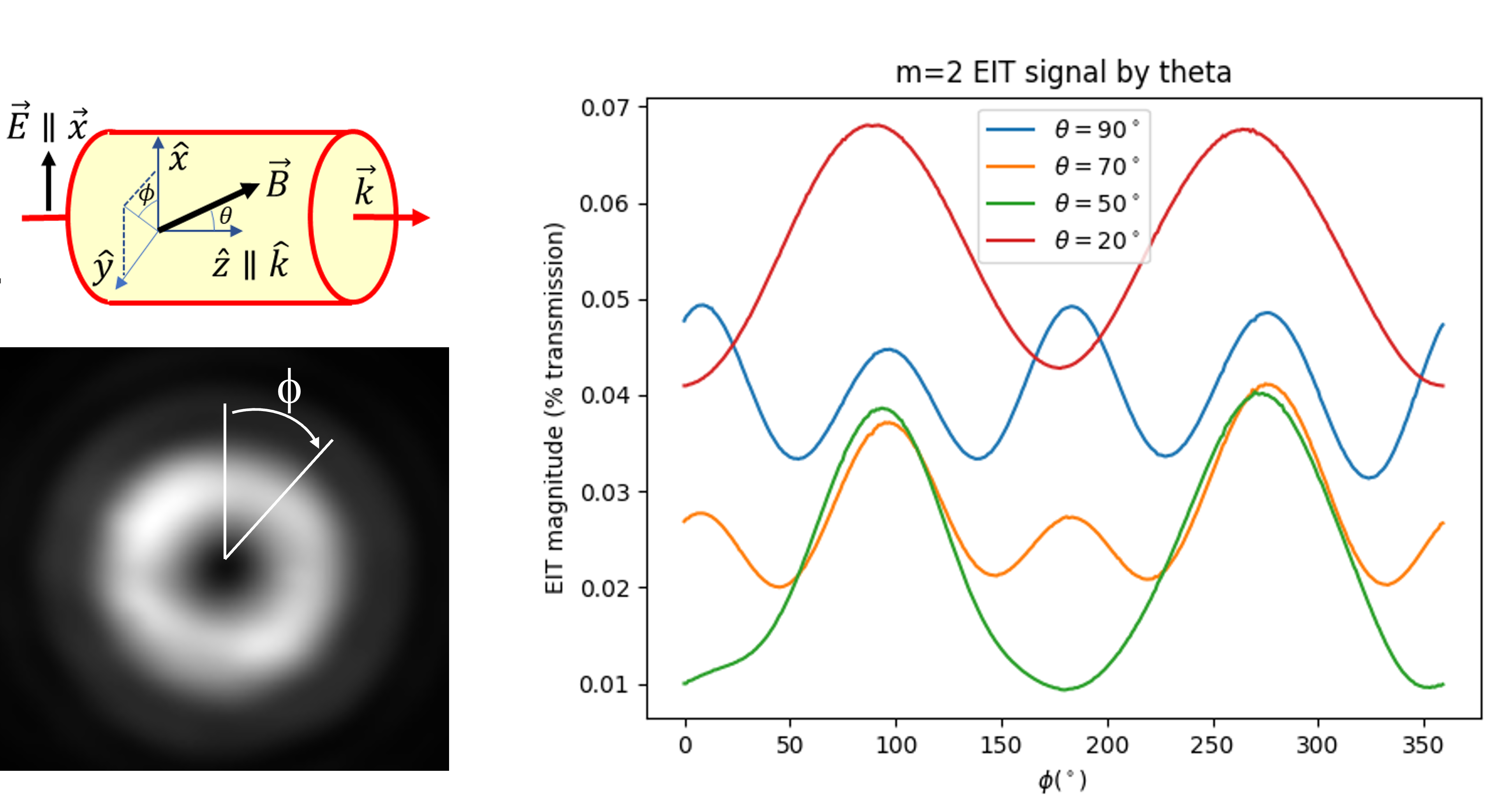Vector magnetometer based on Electromagnetically Induced Transparency in Rb vapor
Magnetometer sensitivity optimization
 In the VAMPIRE (Vector Atomic Magnetometer via Polarization Interrogation with Rotating EIT) project we are building a vector atomic magnetometer based on Electromagnetically Induced Transparency (EIT). By using a bichromatic laser field, we can excite different EIT transition in the hyperfine structure of the 87Rb atoms. When the atom is in a magnetic field those transitions are separated in frequency due to the Zeeman effect, making possible to determine the strength of the field by a direct measurement of this splitting. At the same time, the relative direction of the magnetic field, laser polarization and wave vector determine the amplitude of the different EIT peaks, this due the different values in the dipole matrix elements, allowing us to detect the magnetic field direction by comparing the different EIT spectrums for the different direction configurations. An algorithm based on machine learning optimize this process of angle detection.
In the VAMPIRE (Vector Atomic Magnetometer via Polarization Interrogation with Rotating EIT) project we are building a vector atomic magnetometer based on Electromagnetically Induced Transparency (EIT). By using a bichromatic laser field, we can excite different EIT transition in the hyperfine structure of the 87Rb atoms. When the atom is in a magnetic field those transitions are separated in frequency due to the Zeeman effect, making possible to determine the strength of the field by a direct measurement of this splitting. At the same time, the relative direction of the magnetic field, laser polarization and wave vector determine the amplitude of the different EIT peaks, this due the different values in the dipole matrix elements, allowing us to detect the magnetic field direction by comparing the different EIT spectrums for the different direction configurations. An algorithm based on machine learning optimize this process of angle detection.
By using an isotopically pure 87Rb cell with an inner volume of 100mm3 , we have demonstrated a scalar stability below the 3pT/√Hz limited by the laser shot noise in the 10-100 Hz bandwidth. A sensitivity better than 1° for the angle detection has been demonstrated. Current work involves technics for noise reduction in the long term stability and miniaturization of the system for field measurements and portable applications.
This project is a collaboration between The College of William & Mary, the National Institute of Standards and Technology (NIST) and the NASA'S Jet Propulsion Laboratory (JPL). It was started at the beginning of 2022.
Read the WM News article about the project.
Application of vector vortex beams for magnetic field direction measurements
 Standard approach for determining the direction of the magnetic field vector requires rotation of light polarization and finding local maxima or minima of varous Zeeman EIT peaks. We are also exploring a new approach based on the vortex half-wave retarder that produces a laser beam with azymuthal polarization rotation. By imaging the transmission of such beam, we are able to simultaneoulsy measure the EIT amplitude dependence on polarization in one shot. We demonstrate sub-degree precision on azimuthal angle measurements, and are currently developing a method for accurately finding the longitudinal angle.
Standard approach for determining the direction of the magnetic field vector requires rotation of light polarization and finding local maxima or minima of varous Zeeman EIT peaks. We are also exploring a new approach based on the vortex half-wave retarder that produces a laser beam with azymuthal polarization rotation. By imaging the transmission of such beam, we are able to simultaneoulsy measure the EIT amplitude dependence on polarization in one shot. We demonstrate sub-degree precision on azimuthal angle measurements, and are currently developing a method for accurately finding the longitudinal angle.